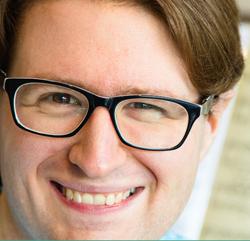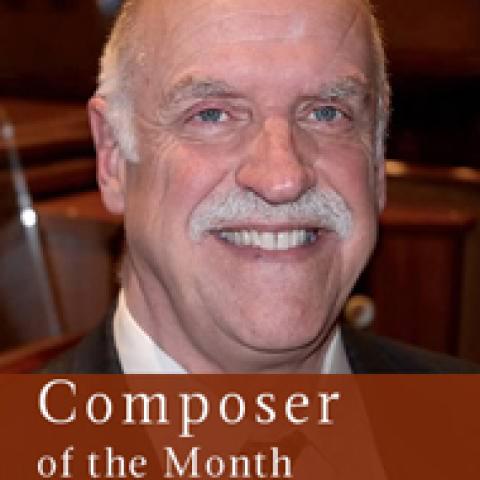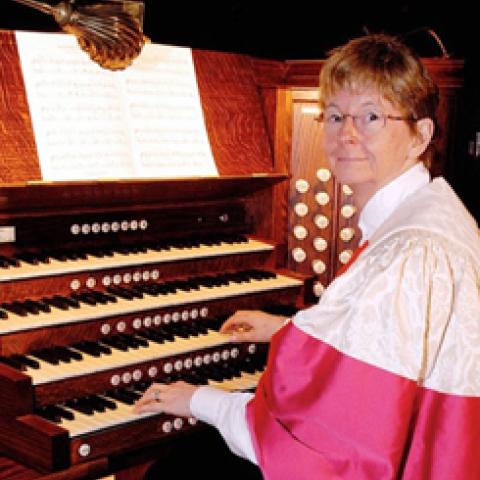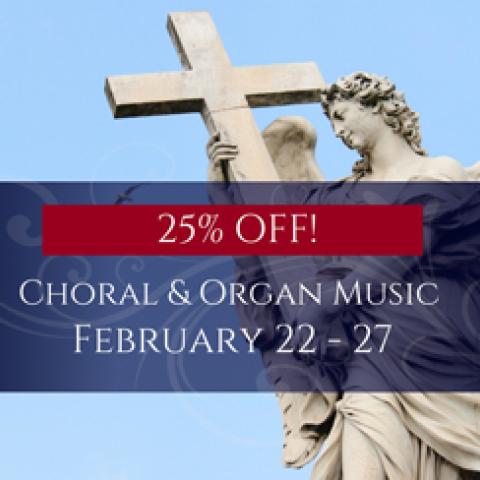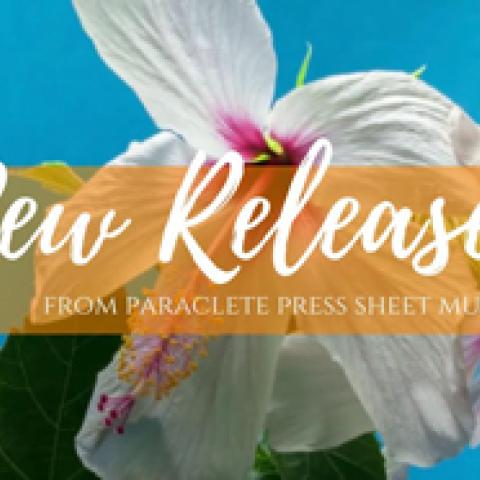An increasingly popular composer of organ and choral music, Craig Phillips was born in Louisville, Kentucky in 1961. By the time he was in his early thirties, Phillips had won First Prize in the Clarence Mader Competition for organ composition (in 1994). Since then, he has published works with increasing frequency, and has completed commissions for the American Guild of Organists, the Association of Anglican Musicians, several American cathedrals, and such notable performers as the Chenaults and Tom Trenney. Phillips’s compositions are engaging and satisfying, and they demonstrate his understanding not only of the voices and instruments for which he writes, but also his audience. He recently launched a website about his work: www.CraigPhillipsComposer.com. Dr. Phillips and I spoke in February 2008.
David Kelley (DK): You have extensive musical training, including a doctorate among other things, but you were not trained as a composer.
Craig Phillips (CP): I was never a composition major; I did study composition when I was an undergrad, for two years as a minor. Then I was a theory minor at Eastman during my graduate studies. I also studied orchestration at Eastman and then coached with Byron Adams here in Los Angeles. Organ was my primary focus during my student years, but I also had been composing since the age of fourteen, and I wanted to keep it going all the time. I think I was mainly known as an organist, especially early on, and it’s just fascinating that I’ve ended up in some ways much more well known as a composer: that’s pretty much since the mid ’90s.
DK: What motivated you initially to start composing? Fourteen is a very early age to begin that!
CP: I’d been playing the piano since I was seven; I would just sit down and improvise and come up with little ditties and so forth; I decided to start writing them down on my own. Then I was encouraged a lot in that direction by the organist at the church I grew up in, a woman named Sharron Lyon, and then when I started studying organ as well, with Peter Fyfe, he also encouraged me in that direction, so that had a lot to do with it.
DK: The liner notes for your CD “A Festival Song: The Music of Craig Phillips” suggest that your theory background is a large contributing factor to the development of your style. Do you think that those studies really enabled you to grow as a composer—or do you even use theory when you compose?
CP: (laughs) You know, I don’t think about it that much at this point! It’s all in my craft, I guess, and because I studied counterpoint and all the theory courses, there is a very solid foundation.
DK: So do you use theory as a tool?
CP: As a tool? Definitely. It’s really the tool that allows you to look at and understand something of how the great masters put their scores together, which in turn can provide an underpinning and foundation for your own work. That being said, once you have that foundation, I think it ultimately frees you to “break all the rules” as it were and forge your own path.
DK: To my ear, one of the things that I admire about your style is its very fluent and mobile harmonic language. You travel very quickly to different places and move very easily.
CP: Yes.
DK: How would you describe your own style?
CP: Well, I don’t think it’s anything you could put a label on—yes, there are modal inflections and that sort of thing, perhaps a sort of romantic, lyrical leaning. I think it’s really an amalgamation of a lot of my influences: the music that I’ve loved growing up and as an organist as well. I think a lot of the organ composers influenced me to a large degree.
DK: I have often heard a little whispering of Herbert Howells, perhaps, in there; maybe a little Duruflé . . .
CP: Absolutely, others have said that as well. I play their music, I know their music—so that becomes a part of me.
DK: Are there any other composers that have been particularly influential?
CP: Of course—Bach—probably the greatest!
DK: The counterpoint?
CP: Yes, and then I’ve always loved the Romantic repertoire as well; I think that’s also a major influence on my style. And I listened to tons of pop music when I was growing up, and even that, I think, has a certain role in what ultimately makes up my style.
DK: Perhaps contributing to your ability to move from one place to another quickly?
CP: (animated) Maybe! I don’t know, because I grew up in the ’70s listening to all kinds of music, Bach, Beethoven, Rachmaninoff, Mahler, Bartók, and so forth, and lots of rock/pop—even film music had an influence I would say, so . . . who knows!
DK: (laughs)
CP: You know, I don’t sit down and analyze my own music that often.
DK: There probably isn’t time for that!
CP: (laughs) This is true, and I’d just as soon leave that to others! I tend to be very instinctive and intuitive about the whole process.
DK: Your organ works are very idiomatic, and they lie under the hands quite well.
CP: I hope so! (laughs)
DK: That indicates to me that you have a performing pedigree, if you will; I have to wonder if you do your composing at the keyboard, or if you do any improvisation—certain elements of the fantasy pieces, the Fantasy on Torah Song in particular, seem almost improvisatory in style. Do you bring those types of elements into your composition?
CP: Let’s see . . . I improvise, but not on that level—I really was not trained in improvisation—I could not just sit down and improvise a piece on the level of, say, the Torah Song. I have to work these things out very carefully, and usually at the keyboard; not necessarily at the organ, but at the keyboard most of the time. But yes, I do think there is an improvisatory aspect towards the way I develop a lot of my ideas—especially the fantasy pieces such as you’re talking about. So it doesn’t bother me if these pieces come off as improvisatory, I think that is just the way my imagination tends to work.
DK: It gives them a spontaneity that is very enticing.
CP: Yes, I think that’s right, and I’ve written several pieces in that same vein actually—some recently—that aren’t yet in print. It seems to be a successful formula for me in terms of organ pieces.
DK: You compose on commission quite a bit.
CP: Yes. I am lucky to have pretty much a steady stream of commissions.
DK: How do you go about tailoring a piece for a commission? I would imagine your own technical ability might lead you astray if you’re writing for a particular audience. Is that ever a problem or something you keep in mind?
CP: Sometimes they stipulate the difficulty level of a piece or specific voicing and so forth. The commissions I’ve had don’t often put limits on me—but I think it’s great discipline to be able to write something that’s very simple if that’s what they’re looking for. I remember the Torah Song fantasy: I think the rules specified that it would be a concert piece, but of moderate difficulty, which is kind of an odd combination—I think I managed to strike a happy medium in that piece.
DK: And that one won a prize.
CP: Yes, the 1994 Clarence Mader Foundation prize in organ composition.
DK: How generalized must you be in assigning registrations to organ works, and how much leeway do you imagine your performers and interpreters having? Some composers, especially French composers, are very specific; many American composers give nothing more than dynamic indications. How do you make those types of decisions?
CP: I have typically put in registrations in most of my pieces, at least as a guideline, but I’ve always told the people I have written these pieces for that they should have leeway to do what works on their instrument, or if they feel strongly about doing something a certain way I’d like to leave a certain amount of freedom to the performer. But I usually suggest various colors or the kind of sound I’m thinking about, and a lot of my pieces do have that sort of French romantic registration ideal behind them.
DK: How much does the instrument at All Saints’ [Beverly Hills] influence—
CP: Oh, probably it does! (laughs)
DK: That’s where you spend most of your time, I imagine.
CP: So it does, I think—the colors that are on that particular instrument often influence what I indicate in my pieces—it’s a pretty comprehensive instrument, I might add! But they can be expanded on.
DK: Well, every organ’s different.
CP: Yes.
DK: I know you have been commissioned by the Association of Anglican Musicians, by Washington National Cathedral, and your works are often performed at All Saints’. Do you feel that you are part of a continuing Anglican musical tradition in the church?
CP: I think I could put myself into that category. Most of my choral commissions have been from Episcopal churches or cathedrals. And the choir that I work with here at All Saints’ is one of the best—I don’t mind saying that I think it’s one of the best choirs in the country in the Anglican tradition, so that’s had a big influence on me, and on my choral writing. We perform a great deal of the English repertoire, as well as American music that flows from that tradition, and I think my own music certainly falls into that continuum.
DK: How would you describe the essential elements of that style?
CP: In terms of the way that I write for the choir, I’m used to a straight-tone sound, and really favor that sound. In the Anglican approach to choral singing there is also a great attention to word accentuation or localized word stress, and that is something that I pay a great deal of attention to in my setting of texts. And as far as texture goes, I use a combination of polyphonic and homophonic textures that ebb and flow—and not strictly one or the other.
DK: A hybrid.
CP: It is sort of a hybrid in a way.
DK: Many English organs are designed primarily as liturgical instruments and choral accompanying instruments, and that certainly has affected many of the composers coming out of those places; do you think that that’s something that you relate to as well, or are you more in that French category where the instrument is more soloistic?
CP: I think maybe I’m a hybrid as far as that goes as well, perhaps leaning to the French side. A lot of my commissions have pretty substantial organ parts—a lot of my choral pieces in general: I like to think of the organ and choir as basically equal partners most of the time, unless specifically it’s not intended to be that way. But, generally speaking, that’s the way I like to treat the organ.
DK: Do you think that there are specifically American traits to the Anglican tradition here that distinguish it from our British counterparts, and perhaps in your works in particular?
CP: I’m sure. I think we take their tradition and make it our own in certain ways, because we have our own unique set of influences—American folk tunes, jazz, spirituals, and popular music. I’m thinking of the New York composers Calvin Hampton, Larry King, and all sorts of people . . . David Hurd and others. I think a lot of that music flows out of that Anglican tradition but is also highly original and very much American, I pretty much see myself falling into that tradition.
DK: Perhaps there’s a little more adventuresome spirit in the American style?
CP: I think you could possibly say that. (pauses) Not to say anything negative about the English at all!
DK: No, no. Well, there’s that classic Anglican restraint, which sometimes we Americans don’t do quite as well.
CP: Probably we’re less restrained. Perhaps. (laughs) I don’t know!
DK: Do you have particular favorites among your own works, pieces that came off particularly well in terms of your expectations when you sat down to write them, or perhaps an organ piece that you like to play a lot?
CP: One of my special pieces is not a solo organ work, but the Concertino for Organ and Chamber Orchestra, which was my first big commission, and it led to all sorts of other things and opened a lot of doors—I think of that as an extremely special piece. Well, I try to make every piece (laughs) something to think of in that way. The chorale preludes are in some ways among the most popular things that I’ve done, and I use those all the time. The Toccata on Antioch, for instance: I sat down and wrote that little set of pieces [Joy to the World: Three Preludes for Christmas] a few years ago, but I use them all the time, they’re very popular, they get played often. Also the Triptych [for Organ] that I wrote in the mid ’90s I use frequently. Those can be played together or separately; I use them separately all the time. They’re quite effective in the service context, and I’ve used them as recital pieces as well. Of my pieces for organ and instruments, the Suite for Organ, Brass [Quintet] and Percussion has certainly been one of the most successful for me.
DK: We spoke earlier about your Fantasy on Torah Song, which is one of my favorites; another I particularly like is your Fanfare. Can you tell me a little about the origin of that work—it was a commission, wasn’t it?
CP: It was commissioned by Pat Gillis, a parishioner at All Saints’, Beverly Hills when we installed a new fanfare trumpet on the organ. It’s a big high-pressure hooded trumpet—it’s quite a brilliant stop—and he actually was the one who paid to have it added to the organ. It was his wish to commission a piece to feature the new trumpet; also it was dedicated to his mother, who was a long-time church organist. So I designed this work to really “show off” the new trumpet stop. It’s basically a rondo with a “big tune” on the solo trumpet making several appearances, and other splashy, colorful things in between. That’s another piece that I think works extremely well as either a recital piece or in the context of a big service or what have you—if you have the right organ.
DK: So, what’s next for you? What’s on your horizon?
CP: Well, I just got today—believe it or not, it was today—confirmation of a commission for the 2010 AGO convention in Washington, D.C. This is for a new work for organ and instruments. It looks like it will be a piece for chamber organ and four winds, probably ten minutes in a single movement . . . the idea is still under development! (laughs) So, that’s kind of a big thing that’s coming up, and there are some other interesting things in the works.
DK: And I believe you told me that you’re launching a website?
CP: Yes, it’s actually up and running now, and has a complete list of my compositions, both published and unpublished, as well as a list of current commissions and other information. You can find it at
<www.craigphillipscomposer.com>.
DK: When you get a commission, how do you decide what to do? I’m sure some of these commissions can be very specific, but others may be rather general.
CP: It depends. If it’s, for instance, a choral piece like what I’ve just been working on, the primary task is to come up with a good text. The people who commission a piece are usually looking for something for a particular occasion, so [we have to find] an appropriate text; usually something in the public domain, or, once or twice, we’ve done things where the text was commissioned simultaneously. So that can be fun, too.
DK: That would be a rather rare opportunity.
CP: I wrote a big Easter anthem a few years ago called On This Bright Easter Morn, which has been very popular. The text was also commissioned and written by a poet named Janine Applegate, who lives in Portland. I collaborated on two pieces with her, which was a lot of fun. But generally speaking I tend to go with things that are in the public domain.
DK: That’s always a safe bet.
CP: It’s a safe bet—less complicated. I’ve set a couple of works to texts by more recent poets—secular pieces—whose foundations, alas, don’t yet allow their texts to be set to music for publication. But they generally specify a length of a piece, and I ponder . . . (laughs) . . . ponder the text or whatever the idea for the piece is, and then just get going. Coming up with the initial idea for a piece, I think, is always the most difficult part—once you have it, and you know it’s right, things begin to flow. With most commissions usually people have a general idea of what they’re looking for. I received one recently through a church and an arts foundation: they’re going to send me some paintings from local artists to look at and then devise a set of pieces based on probably two or three of these paintings— it will be something totally different; I don’t yet know what I’ll do with that!
DK: It will be your own version of Pictures at an Exhibition.
CP: Very much; that’s the idea they had in mind. So that will be something quite different, at least something I have not done before.
DK: Is there anything that you would communicate to a young crop of organists, given the chance?
CP: I don’t know if many of them are interested in composition or not, but I would say it’s good to stay open—to new organ compositions in general, and to the idea that being an organist and a composer is a long, long tradition. Being a performer and a composer was really the norm until fairly recently in the scheme of things, and there’s no reason why it shouldn’t still be that way, in my opinion. Being an organist and a performer and a composer . . . it all works together for me, so . . . (laughs) I think it’s a great combination.
DK: Well, it’s working for a lot of other people, too: they think it’s a good combination for you (laughs) as well!
CP: It’s a good combination for me, but others can do it!
DK: Thanks very much for speaking with me today, and keep up the good work!
CP: Well, thank you very much!�
--------------------------------------------------------------------------------------------------------
Craig Phillips Organ and Choral Works, and Recordings
Organized by scoring and title, with publisher and catalog number
Organ Solo
Fanfare (Selah, 160-640)
Fantasia on the tune Finnian (Selah, coming soon)
Fantasia on Sine Nomine (Selah, 160-676)
Fantasy Toccata (Selah, coming soon)
Fantasy: Torah Song (Yisrael V’oraita) (Selah, 160-857)
Fantasy: Terra Beata (Paraclete Press, PPM00431)
Festival Piece (Selah, 160-860)
Glad Praises We Sing (Selah, 160-814). Four Preludes for Organ: Kremser, Hyfrydol, Nettleton, Engelberg
Joy to the World (Selah, 160-815). Three Preludes for Christmas: Divinum Mysterium, Forest Green, Toccata on Antioch
Organ Music for the Seasons, Vol. 4 (Augsburg Fortress, 9780800637507). Prelude on Richmond
Partita on Lobe den Herren (Selah, 160-691)
Partita on Veni Creator Spiritus (Selah, 160-440)
Prelude on Victimae paschali (MorningStar, MSM-10-513), from Three Plainchants for Organ, ed. Lynn Trapp
Psalm Prelude (Selah, 160-875)
Toccata on Hyfrydol (Selah, 160-675)
Tribute (A lullaby for organ) (Selah, 160-682)
Triptych for Organ (MorningStar, MSM-10-941)
Trumpet Tune (MorningStar, MSM-10-926)
Wondrous Love (Fred Bock Music Co., BG0945). 12 Preludes for Organ (includes “Aria”)
25 Harmonizations and Descants (Selah, 160.731). Volume XI of series
Organ and Instruments
A Song Without Words (E. C. Schirmer, #6750), for cello and organ
March for Trumpet & Organ (Selah, 160-970)
Night Song for Oboe and Organ (or harpsichord) (Selah, in preparation)
Pastorale & Dance (Selah, 160-975), for bassoon & organ
Prelude & Exultation for Organ, Brass Quintet, and Percussion (Selah, full score 160-985, organ score 160-986, instrumental parts 160-987)
Serenade for Horn and Organ (Oxford, 0-19-386763-X)
Suite for Organ and Brass Quintet and Percussion (Selah, full score 160-981, organ score 160-982, instrumental parts 160-983)
Unpublished Works for Organ Solo or Organ and Instruments
Concertino for Organ and Chamber Orchestra (1995) c. 13 minutes. 2 flutes, clarinet in A, bass clarinet, bassoon, horn in F, 2 trumpets, trombone, strings. Score and parts available on rental.
Sonata for Cello and Organ (2004). Score available for sale.
Sonata for Organ (1983). Score available for sale.
Second Sonata for Organ (2001). Score available for sale.
Variations on a Kyrie (1995). Concert work for organ duet. Score available for sale.
Choral
A Festival Song (E. C. Schirmer, #5440 & #5441), SATB chorus, soprano and baritone soli, and orchestra
A True Hymn (Selah, 418-624), SATB and organ (text of George Herbert)
And I Saw the Holy City (Oxford, ISBN 0-19-386712-5), SATB and organ
Antiphon: Let All the World in Every Corner Sing (Paraclete, PPM00435), SATB and organ
The Beatitudes (Selah, 410-516), SATB and organ
Benedictus Dominus Deus (A Song of Zechariah) (Selah, 410-887), SATB and organ
Christ, mighty Savior (Paraclete, PPM00538), SATB and organ (alternate version with strings and organ)
Dies Gratiae (Requiem Reflections) (Selah, 440-901), SATB, soprano and baritone soli, and orchestra
Festival Eucharist (Paraclete, PPM00624), choral score with congregational parts, with organ
Festival Eucharist (Paraclete, PPM00624FS), SATB, congregation, descant, brass quintet, timpani and organ
For God So Loved the World (Paraclete, PPM00606), SATB a cappella with solo soprano
Glorious Things of Thee Are Spoken (hymn concertato) (Selah, 425-888), SAB, 2 trumpets, timpani and organ
Gracious God (Paraclete, PPM00132), SATB, organ and flute
Great Is the Lord (Paraclete, PPM00813), SATB and organ
Hodie Christus Natus Est (Trinitas, 4502), SATB and organ
The Holly and the Ivy (Paraclete, PPM00018), SATB and organ
The House of Faith Has Many Rooms (Selah, 410-691), SATB and organ
How the Grandeur of Creation (Selah, 410-639), SATB, organ (optional strings)
I Love All Beauteous Things (Trinitas, 4610), SATB and organ
Keep Watch, Dear Lord (Selah, 420-526), SATB and organ
Light’s Glittering Morn (Paraclete, PPM00427), SATB and organ
(A version with brass quintet and timpani is also available from the publisher)
Missa Brevis (Washington National Cathedral) (Trinitas, 4583), SATB and organ
Morning Glory, Starlit Sky (Paraclete, PPM00835), SATB a capella
On This Bright Easter Morn (Trinitas, 4501), SATB, organ, brass quintet
People, Look East! (Selah, 405-103), unison, organ, and optional descant
The Preces and Responses (Paraclete, PPM00211), SATB and organ
Psalm 34 (E. C. Schirmer, 5364), two-part treble and organ
Psalm 84 (Paraclete, PPM09729), SATB and organ
Psalm 103 (Trinitas, 4507), SATB and organ
Ride on in Majesty (Trinitas, 4580), SATB anthem with organ
The Risen Sun (Selah, 420-337)
Rorate Caeli (Trinitas, 4500), SATB a cappella
So Much to Sing About (E. C. Schirmer, #5365), SATB and organ
Teach me, my God and King (Paraclete, PPM00303), SATB motet, unaccompanied
Thee Will I Praise (E. C. Schirmer, #5718), SATB and organ
Version with organ and brass quintet (E. C. Schirmer, #5719 & 5719A)
There’s a Voice in the Wilderness Crying (Selah, 422-903), two-part choir and organ
Transfiguration (Selah, 405-390), SATB and organ
Two Advent Anthems (Selah, 405-146), SATB, organ and oboe
The Unsearchable Riches (Paraclete, PPM00625), SATB and organ
We Walk by Faith (Trinitas, 4611), SATB divisi and organ
Unpublished Choral Works
Come, my Way, my Truth, my Life (2005), SATB motet, unaccompanied
Lord, You now have set your servant free (2006), SATB anthem, with organ, brass quintet and timpani
Magnificat (1993) c. 9 minutes, score and parts available on rental, SATB chorus, string orchestra and organ
Magnificat and Nunc Dimittis in D (2003), SATB canticles with organ
Magnificat and Nunc Dimittis in D-flat (2002), SATB canticles with organ
O Light Invisible (2003), SATB motet, a cappella
The Preces and Responses (A-flat) (2002), SATB, unaccompanied
Rune of Hospitality (2003), SATB anthem, unaccompanied
Send forth your light (2002), SATB anthem with organ, based on Psalm 43
Sweet Music, Heavenly Rare (2006), SATB motet, unaccompanied
The Passion According to St. John (2008), SATB chorus, three soloists, unaccompanied
Though every tongue shall spend its fire (2003), SATB anthem with organ
You Shall Know the Truth (2005), SATB anthem with organ
Recordings
A Choral Feast (2001) (Gothic, G-49126), The Choir of Men & Boys, Washington National Cathedral, Douglas Major, conductor. “Gloria” from Missa Brevis
A Festival Song: The Music of Craig Phillips (2004) (Gothic, G-49207), The Choir of All Saints’ Beverly Hills; Tom Foster, conductor; Craig Phillips, organist.
Song of Zechariah: Benedictus Dominus Deus
Teach Me, My God and King
Serenade for Horn and Organ
Psalm 34
Pastorale for Bassoon and Organ
The House of Faith Has Many Rooms
And I Saw the Holy City
Ride On in Majesty
Fanfare for Organ
Keep Watch, Dear Lord
A Song Without Words for Cello and Organ
A Festival Song
Be Still My Soul (2006) (Gothic, G-49251), The Choir of All Saints’ Church, Beverly Hills, Dale Adelmann, conductor. The Risen Sun, Transfiguration, We Walk by Faith
Blasts from the Past Century (2006) (Pro Organo, CD 7197), David Heller, organ. Fantasy Toccata
Burnished Bright (2006) (Paraclete, GDCD 040), Gabriel V Brass Quintet, David Chalmers, organ. Suite for Organ, Brass and Percussion
Easter (1997) (Gothic, G-49097), The Choir of All Saints’ Church, Beverly Hills, Thomas Foster, conductor. On this bright Easter morn
On A Sunday Afternoon (2005) (JAV Recordings, JAV 149), Todd Wilson, organ; Yvonne Caruthers, cello. A Song Without Words for Cello and Organ
Organ Americana (2004) (Pro Organo, CD 7196), Tom Trenney, organ. Toccata on “Antioch,” Prelude on “Kremser,” Fantasy on “Torah Song”
Seasons of Festivity (1997) (Arkay Records, AR6162), Marilyn Keiser, organ. Prelude on “Kremser”
Silence & Music (1993) (Gothic, G-49064), The Choir of All Saints’ Church, Beverly Hills, Thomas Foster, conductor. Hodie, Christus natus est
Sinfonia Festiva (2005) (Summit Records, DCD 436), Paul Skevington, organ; Washington Symphonic Brass. Psalm Prelude, Fanfare, Suite for Organ, Brass and Percussion
Small Wonder (2003) (Pro Organo, CD 7190), Christmas at St. Paul’s, K Street, Washington, D. C. The Holly and the Ivy (arr. Phillips)
Spiritual Pairs (1996) (Pro Organo, CD 7067), Marilyn Keiser, organ. If you will only let God guide you
